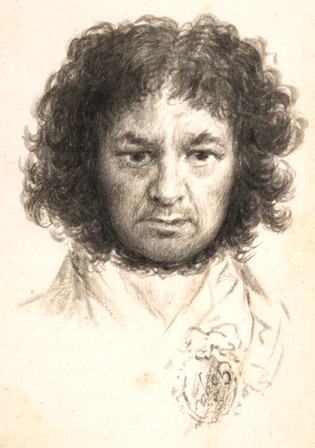
Francisco de Goya y Lucientes.
Spanish Artist Francisco de Goya's "The Disasters of War" series, documents the horrors of the Peninsular War of 1808–14 between Spain and France under the tutelage of Napoleon Bonaparte. FristArtMuseum.
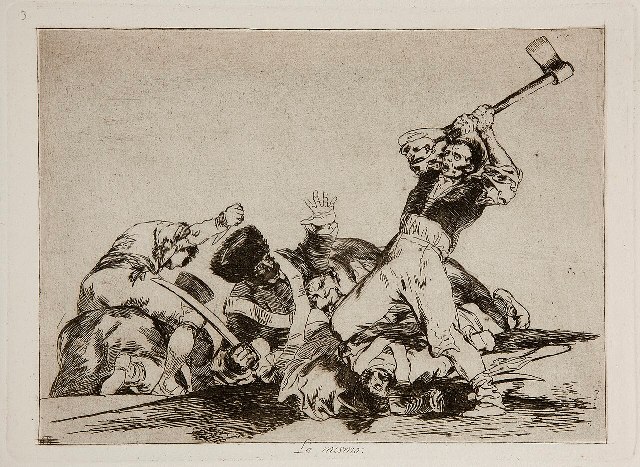
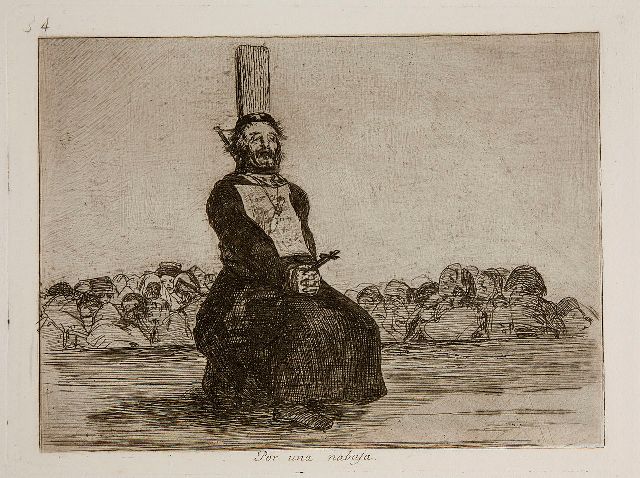
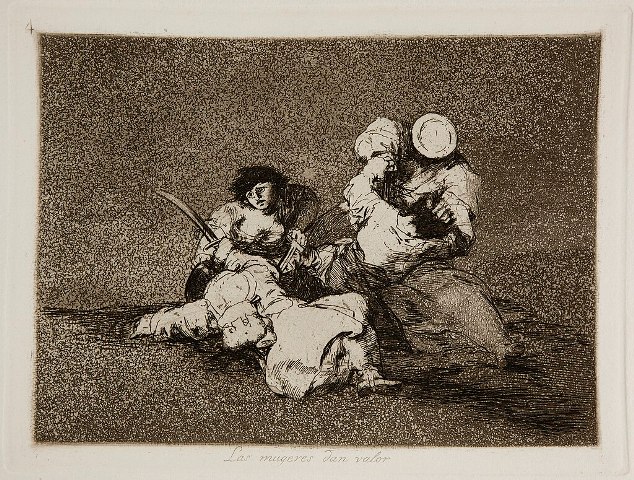
The Peninsular War, 1808-1813 - Frustrated by Portugal's defiance of his Continental Blockade against trade with Great Britain, Napoleon ordered General Jerot to march French troops over the Pyrenees. On November 30, French troops entered the Portuguese capital of Lisbon and closed the country's ports to English ships. Spain, alarmed at France's aggression, began to question their alliance with Napoleon.
By 1808, Napoleon had installed his brother Joseph as the king of Spain and sent 118,000 soldiers across into Spain to insure his rule. Determined to bend the Spanish people to his will, he had decided to make Spain a part of his empire. He imagined they would be welcomed. "With my banner bearing the words 'Liberty and Emancipation from Superstition,'" he said, "I shall be regarded as the liberator of Spain."
Napoleon could never imagine that some people loved their countries as much as he loved his own. It was a failing, compounded by arrogance and pride, that would bring about his downfall. On May 2, the Spanish people rose up against the French army in Madrid. By nightfall, 150 French soldiers were dead. The French retaliated, killing thousands of Spaniards. It was the start of a brutal, no-holds-barred war, marked by savagery on both sides. The French tortured and mutilated their prisoners; the Spanish did the same. PBS.org.
By 1808, Napoleon had installed his brother Joseph as the king of Spain and sent 118,000 soldiers across into Spain to insure his rule. Determined to bend the Spanish people to his will, he had decided to make Spain a part of his empire. He imagined they would be welcomed. "With my banner bearing the words 'Liberty and Emancipation from Superstition,'" he said, "I shall be regarded as the liberator of Spain."
Napoleon could never imagine that some people loved their countries as much as he loved his own. It was a failing, compounded by arrogance and pride, that would bring about his downfall. On May 2, the Spanish people rose up against the French army in Madrid. By nightfall, 150 French soldiers were dead. The French retaliated, killing thousands of Spaniards. It was the start of a brutal, no-holds-barred war, marked by savagery on both sides. The French tortured and mutilated their prisoners; the Spanish did the same. PBS.org.

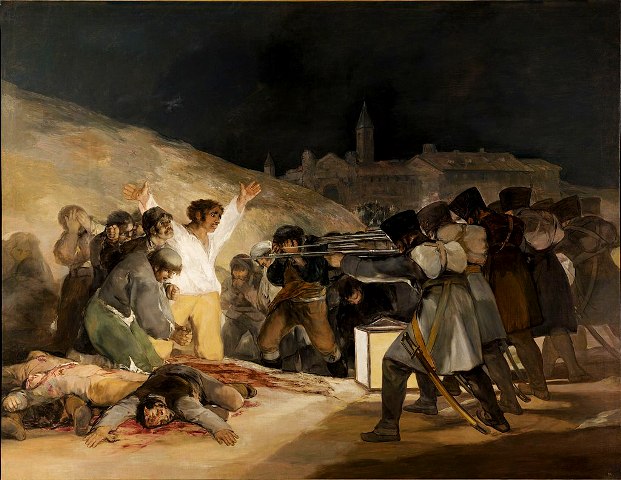
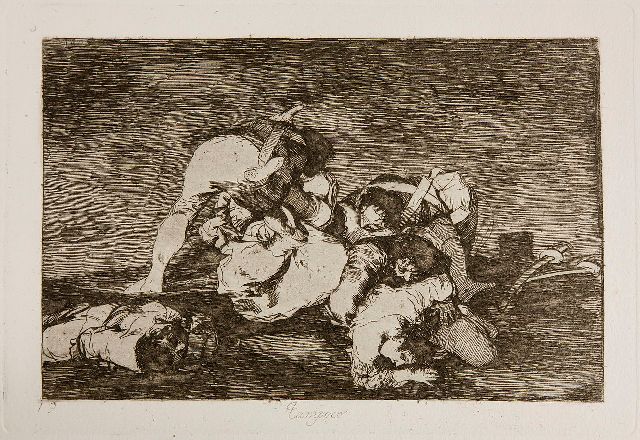
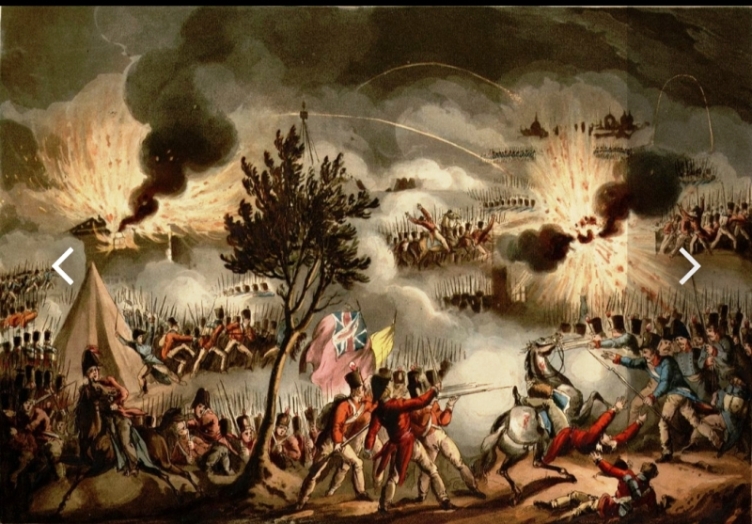
The Sortie From Bayonne by Thomas Sutherland.
The Battle of Bayonne on 14 April 1814 saw the French garrison of Bayonne led by General of Division Pierre Thouvenot launch a sortie against a besieging force of British, Portuguese, and Spanish troops commanded by Lieutenant General John Hope. The fighting marked the last major battle of the Peninsular War and occurred after unofficial news of Napoleon's 4 April abdication reached the opposing forces.
The Peninsular War (1807–1814) was the military conflict fought in the Iberian Peninsula by Spain, Portugal, and the United Kingdom against the invading and occupying forces of the First French Empire during the Napoleonic Wars. In Spain, it is considered to overlap with the Spanish War of Independence.
The war started when the French and Spanish armies invaded and occupied Portugal in 1807 by transiting through Spain, and it escalated in 1808 after Napoleonic France occupied Spain, which had been its ally. Napoleon Bonaparte forced the abdications of Ferdinand VII and his father Charles IV and then installed his brother Joseph Bonaparte on the Spanish throne and promulgated the Bayonne Constitution.
Most Spaniards rejected French rule and fought a bloody war to oust them. The war on the peninsula lasted until the Sixth Coalition defeated Napoleon in 1814, and is regarded as one of the first wars of national liberation. It is also significant for the emergence of large-scale guerrilla warfare. Wiki.
The Peninsular War (1807–1814) was the military conflict fought in the Iberian Peninsula by Spain, Portugal, and the United Kingdom against the invading and occupying forces of the First French Empire during the Napoleonic Wars. In Spain, it is considered to overlap with the Spanish War of Independence.
The war started when the French and Spanish armies invaded and occupied Portugal in 1807 by transiting through Spain, and it escalated in 1808 after Napoleonic France occupied Spain, which had been its ally. Napoleon Bonaparte forced the abdications of Ferdinand VII and his father Charles IV and then installed his brother Joseph Bonaparte on the Spanish throne and promulgated the Bayonne Constitution.
Most Spaniards rejected French rule and fought a bloody war to oust them. The war on the peninsula lasted until the Sixth Coalition defeated Napoleon in 1814, and is regarded as one of the first wars of national liberation. It is also significant for the emergence of large-scale guerrilla warfare. Wiki.

Joseph Bonaparte.